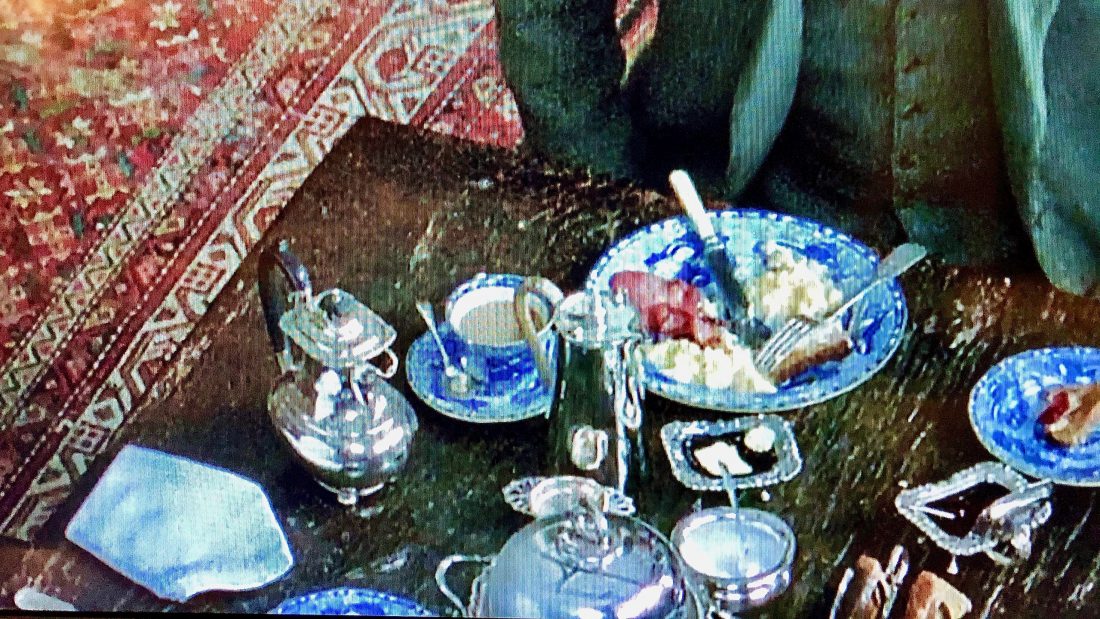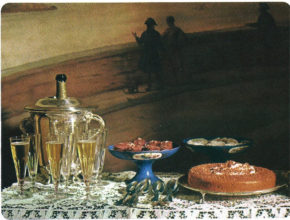There are so many great period television shows, but not all of them also happen to have great tableware. Just in case you want to watch a good show and see some delectable table settings, here are my top ten for the 20’s to the 50’s.
10. Lord Peter Whimsey, 1970
Please excuse the terrible quality of these photos, they’re shot off of the tv with my iPhone and the 1970’s video quality wasn’t exactly wonderful to begin with. The silver and china looked better in motion.
For those who love the Lord Peter Whimsey mysteries, these are fairly good. They stick closely to the books – so closely each mystery is four one hour episodes. These are the mysteries without Harriet Vane. One interesting bit of trivia, this show was so popular on PBS, the series Mystery! was created.
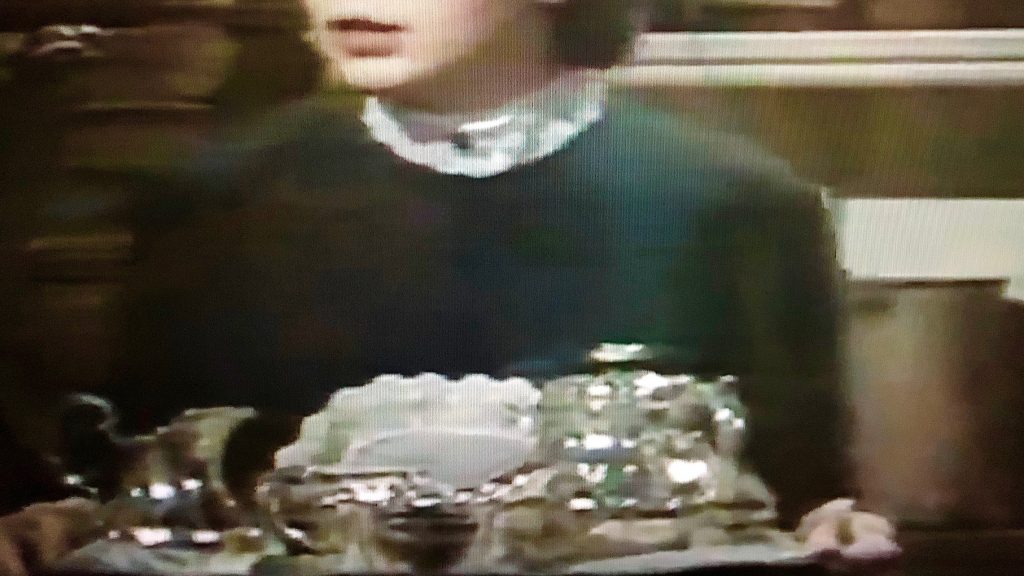
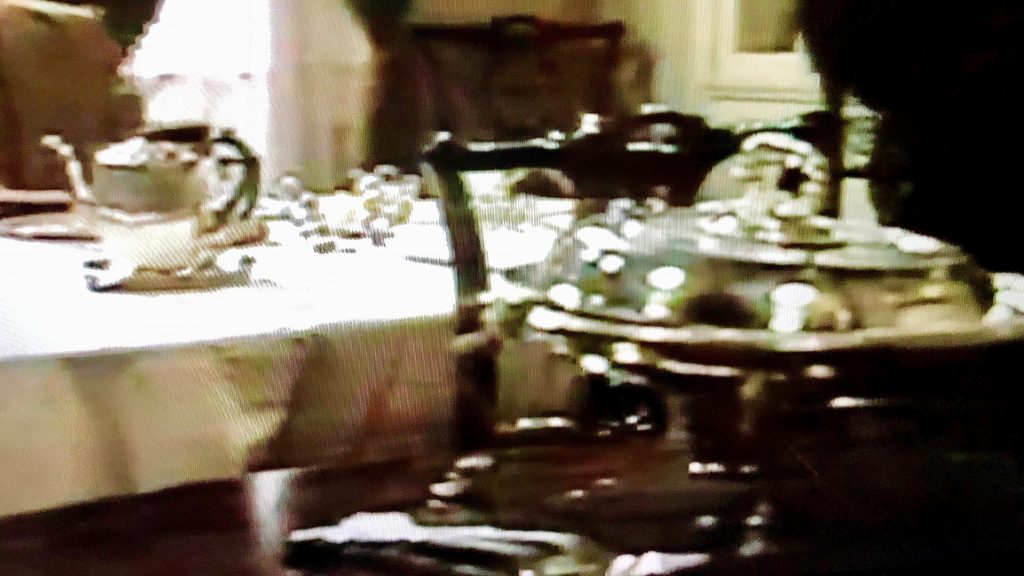
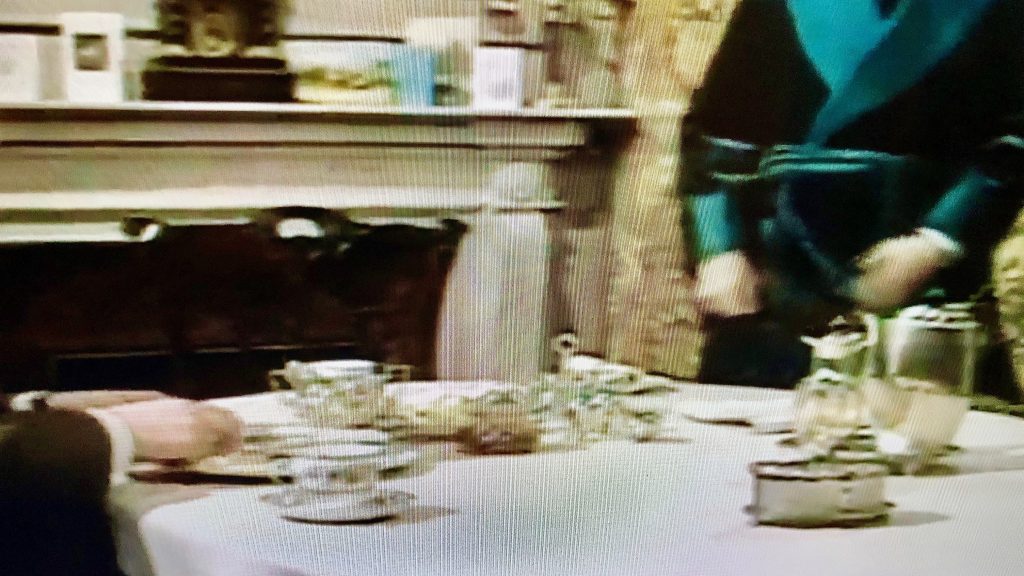
9. Miss Fisher’s Murder Mysteries
Let’s be honest, Miss Fisher’s Murder Mysteries is best for the costumes, but they occasionally do show some china. Perhaps it’s the fact that Phryne Fisher is supposed to be an iconoclast, the writers seem to avoid having her take many meals. She’ll imbibe a cocktail and there are a number of scenes set in her kitchen, but just not a lot of great dinners or teas to speak of.
Sometimes we get tableware that does not entirely fit the period, but mostly it’s quite good, just sparse.

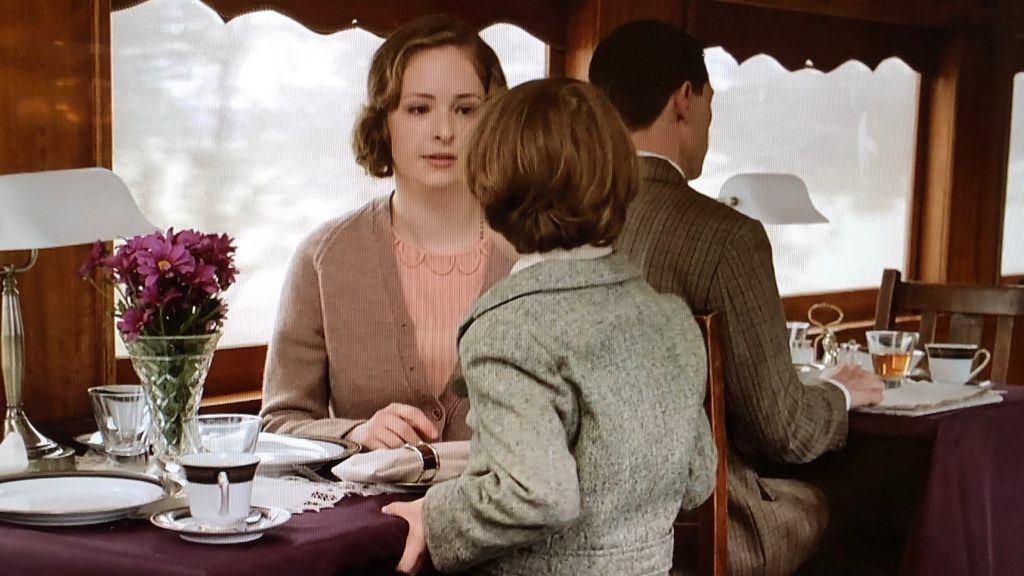

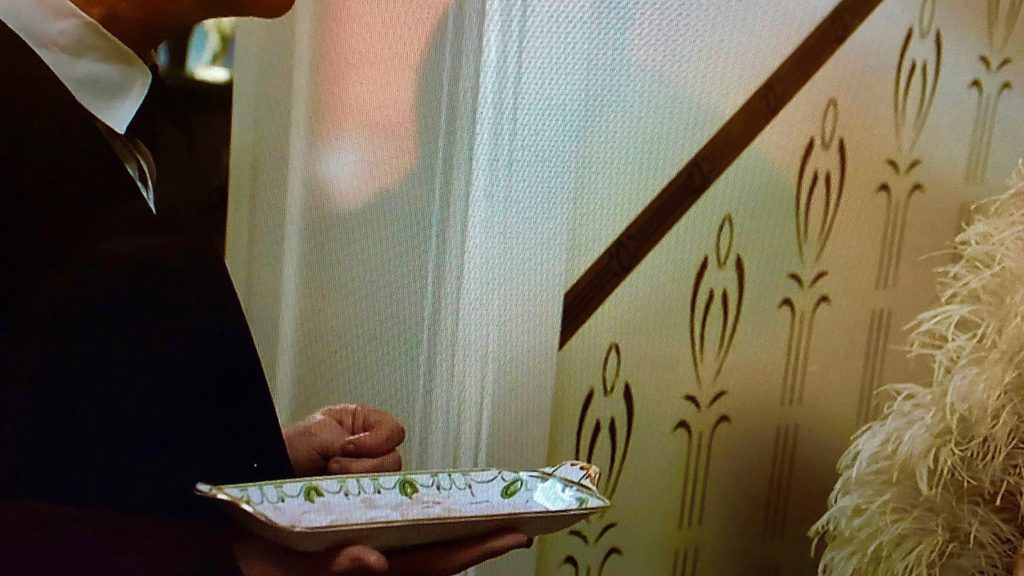

8. Why Didn’t They Ask Evans
Francesca Annis is gorgeous and the leading man has an unfortunate mustache for part of the show. Sir John Gielgud plays a disapproving father, as he seemed to have done so many times from the 80’s to the 90’s. The thirties costumes are lovely – the hats especially. Lots of ladies in bias cut dresses swanning around tea sets. What’s not to love?

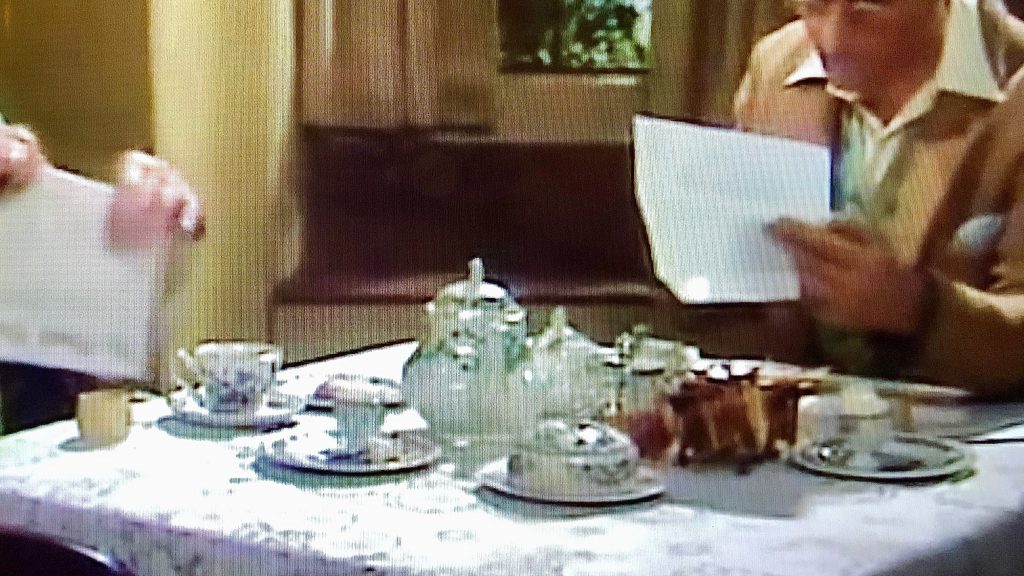
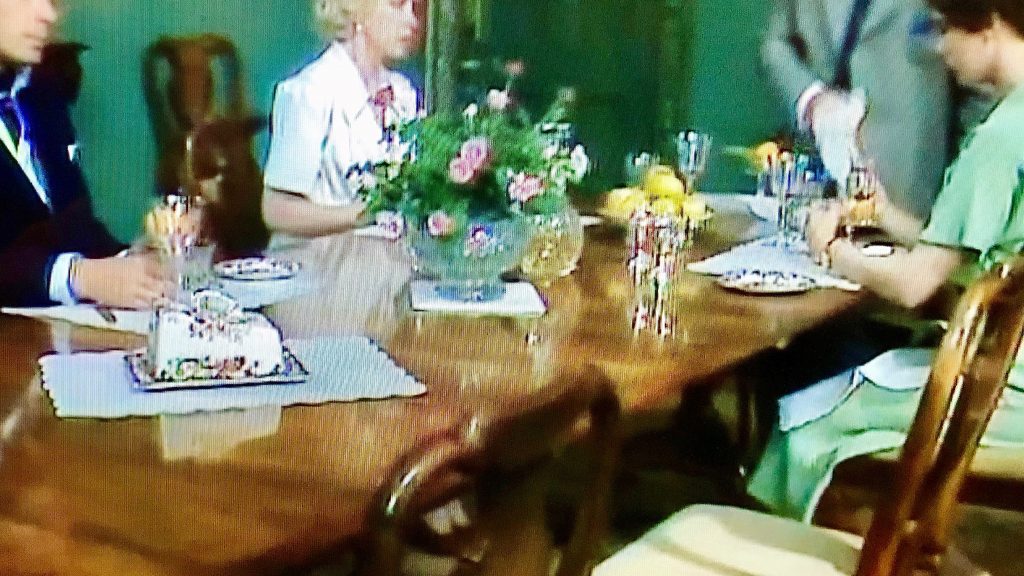
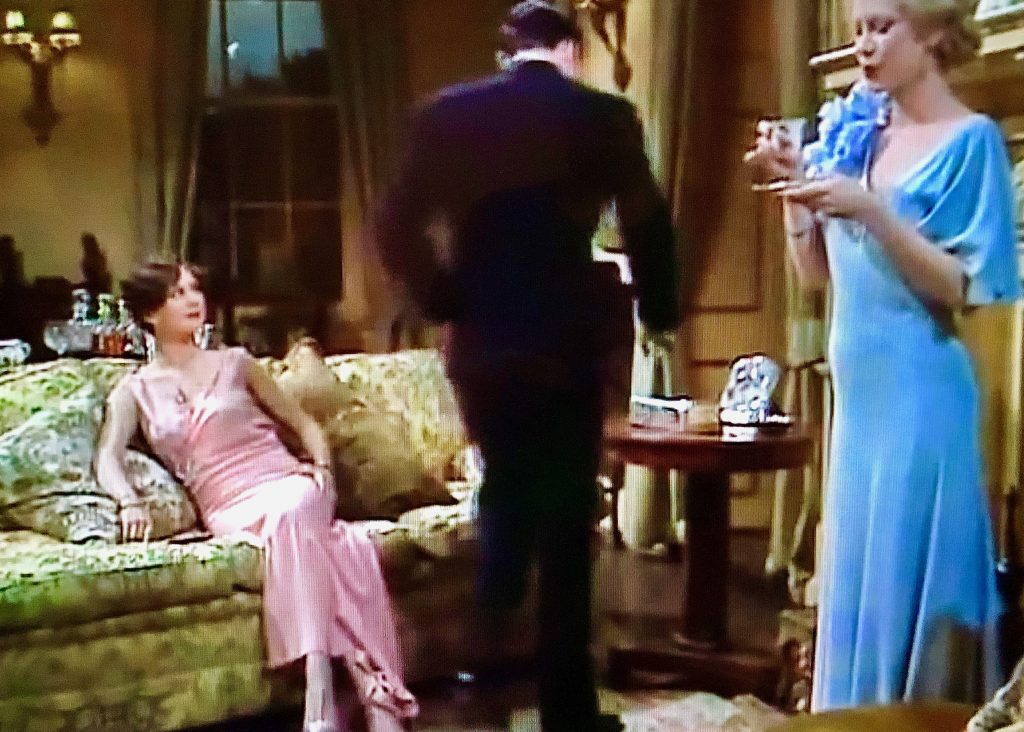
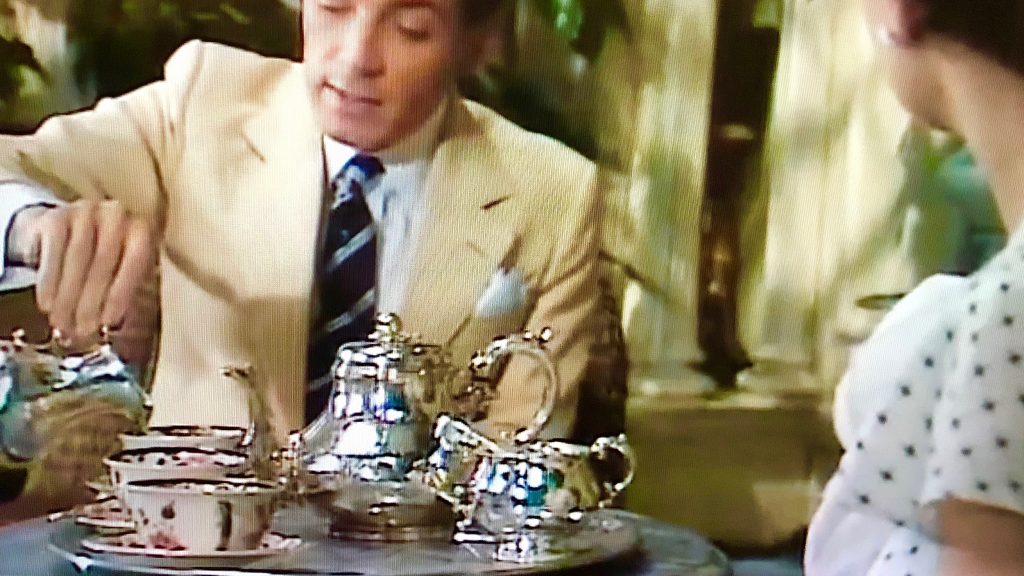
7. Brideshead Revisited (1981)
This really is the period mini-series that started it all. A sensation when it came out, it’s still watchable today. While I liked the updated version from a few years back – and was happy to see them fix a few of the “issues” around the character’s homosexuality, it lacked the feeling of innocence and lack of cynicism the first one had.
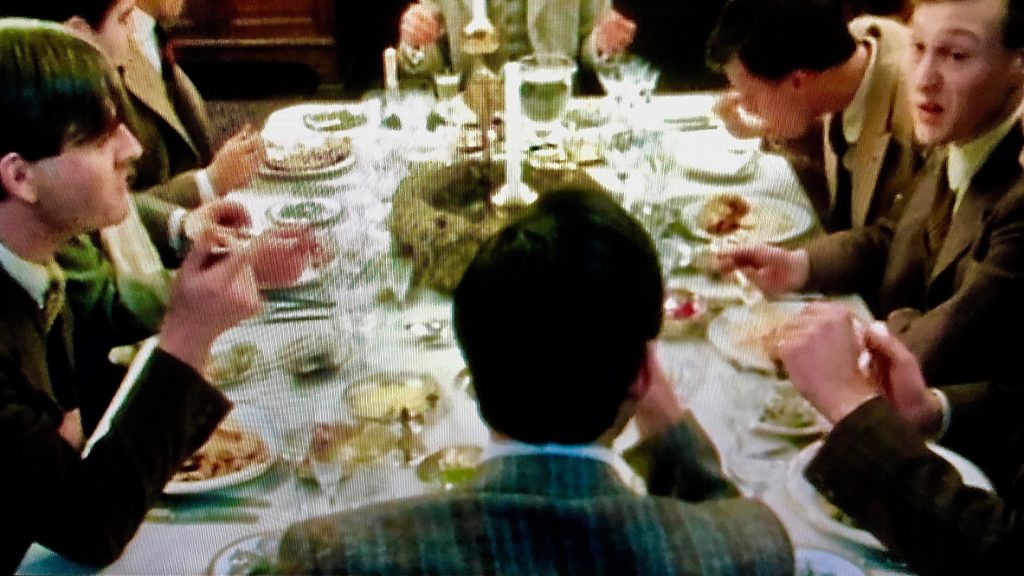

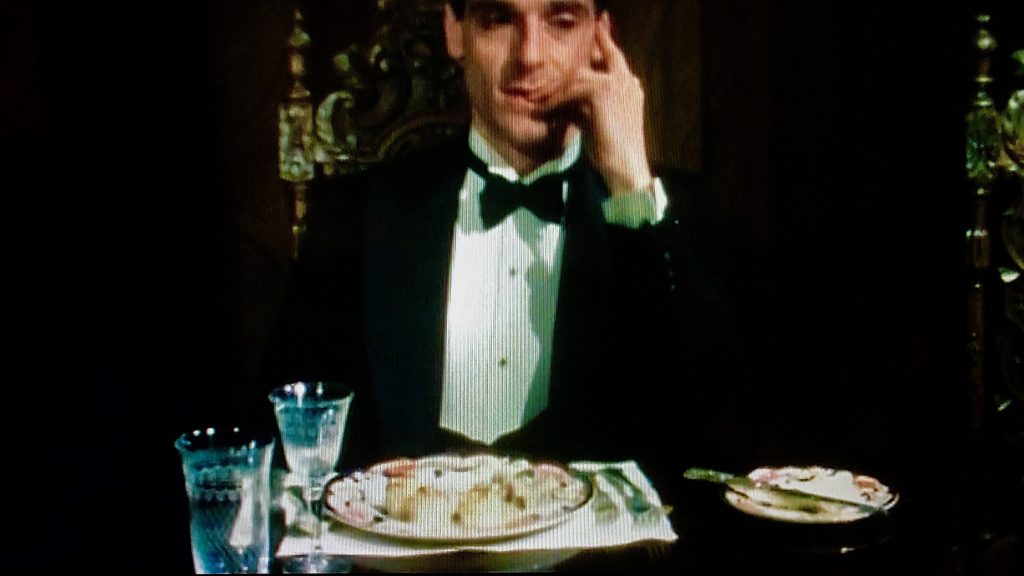
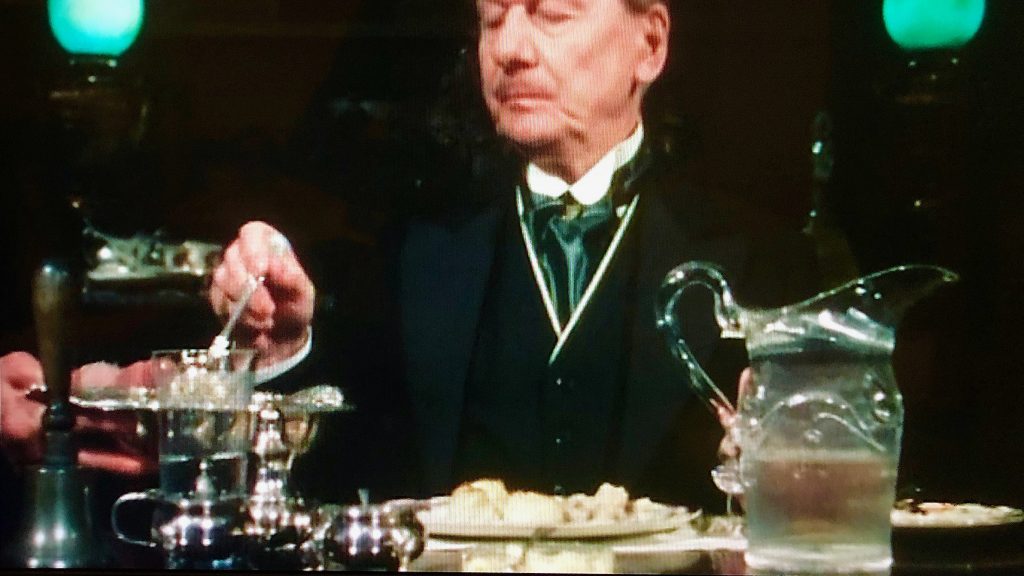
6. Chamomile lawn
A lovely drama about the aftermath of the last summer a group of young cousins and their friends spend prior to the start of the second world war. The cast is stellar: all the actors you now know and love are here in early if not first major roles. Everyone is terrific. Just for your information, this is NSFW, everyone is butt ne’ked in it.

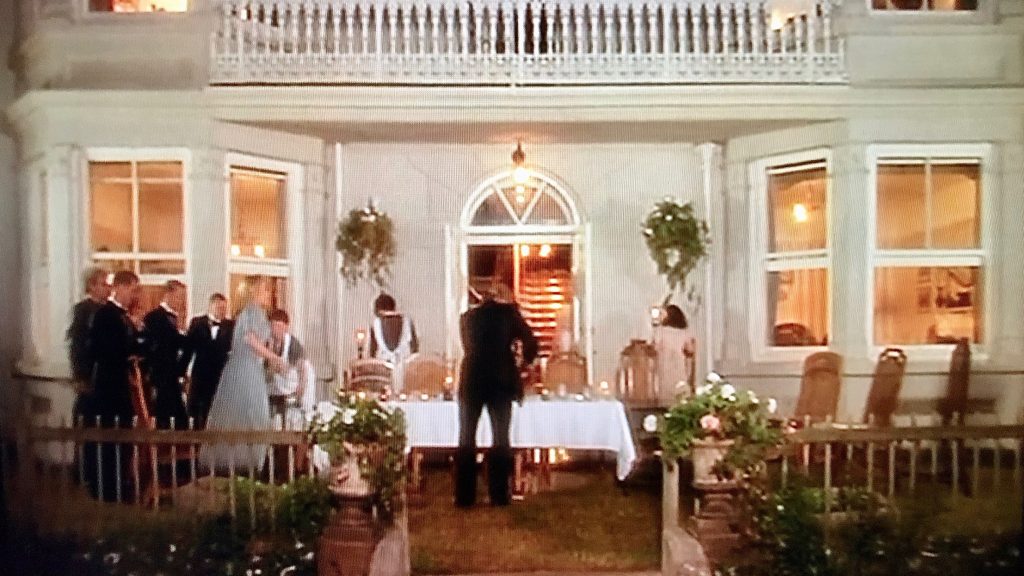

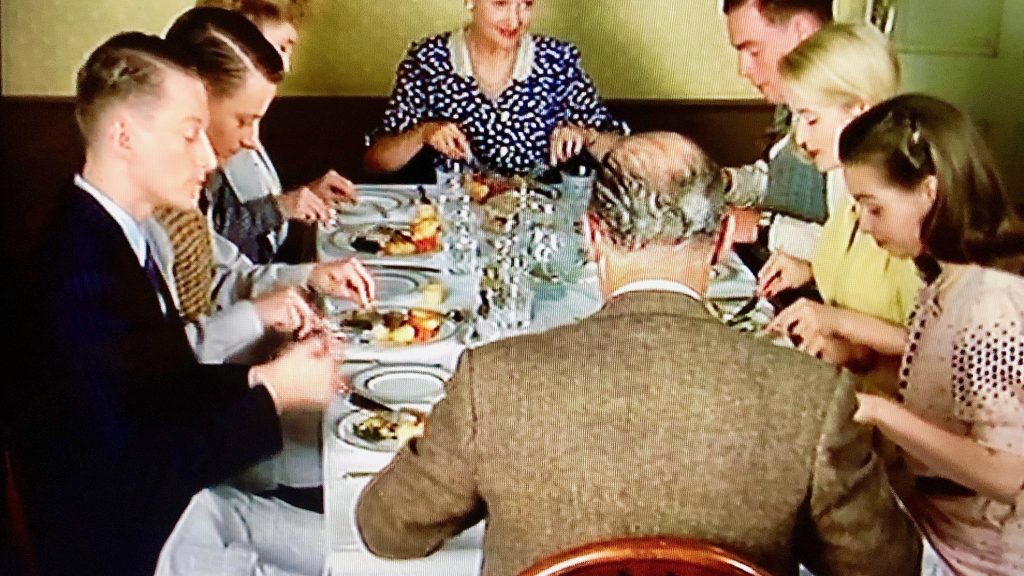
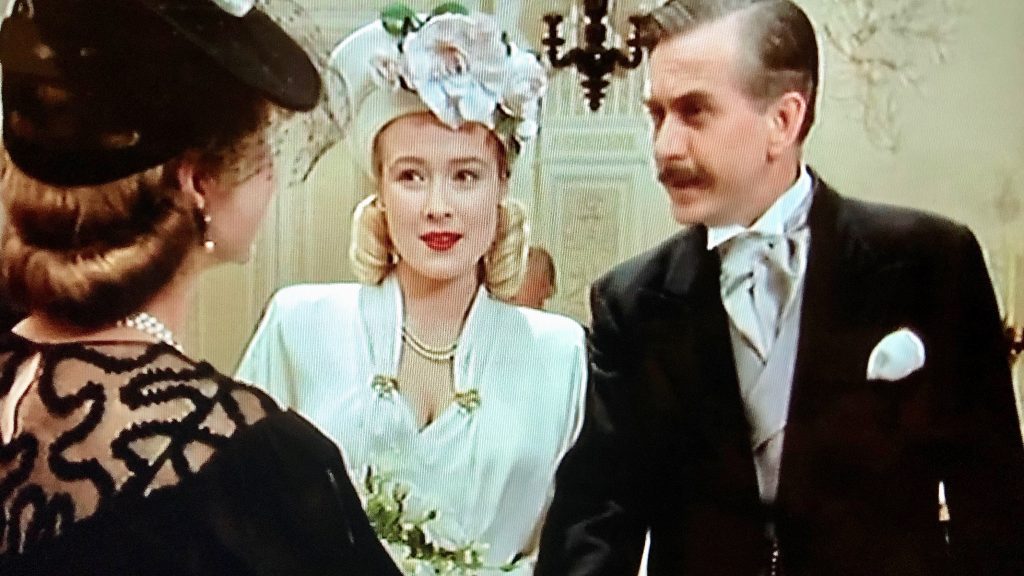
5 Poirot
If we were rating on the series alone, I would tell you that Poirot is number one. It’s a rare thing when a series lasts so long, not only does it cover the entire cannon of books and short stories it’s based on, but also deepens and gets better year after year.
David Suchet is one of my favorite actors and not just in this. He’s deliciously good. And for the definitive screen version of Murder on the Orient Express, watch the one made for this series. By watching the series, you watch Poirot age, grow more cynical and become a fully rounded character. When you get to Murder on the Orient Express, your dedication is paid off with an outstanding emotional wallop.
Sadly, there isn’t a ton of china in Poirot. What there is is still wonderful, because it has a more masculine take than we’re used to seeing in period film and tv, plus it really leans into the deco style in the art direction. British television shows are particularly good with the details of furnishings, so Poirot has a modern deco tea set, (as a newcomer and war refugee who had to purchase new things) while the comfortably rich widow has a set that seems older, as if it was a well loved wedding present that she still uses.

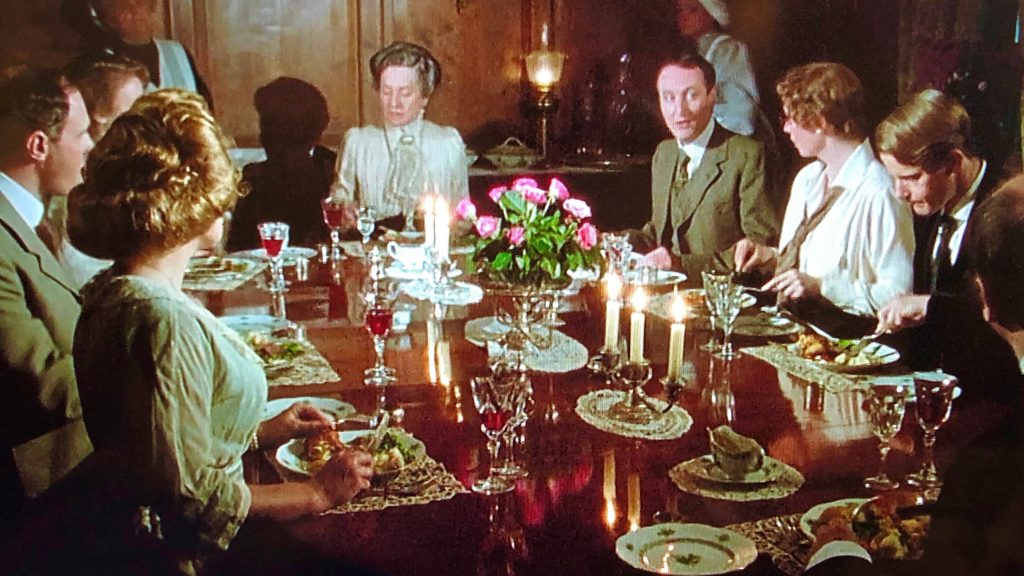
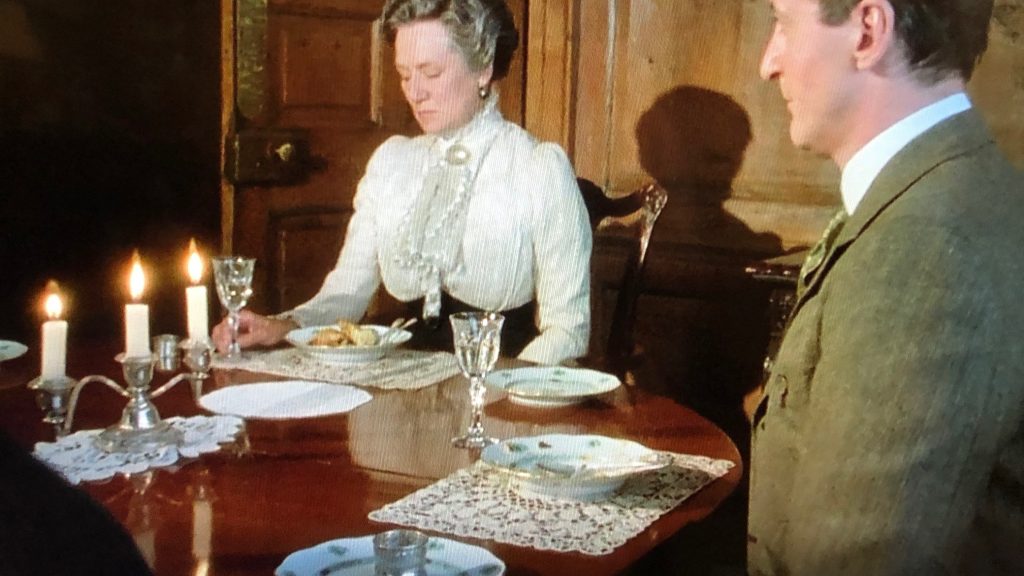
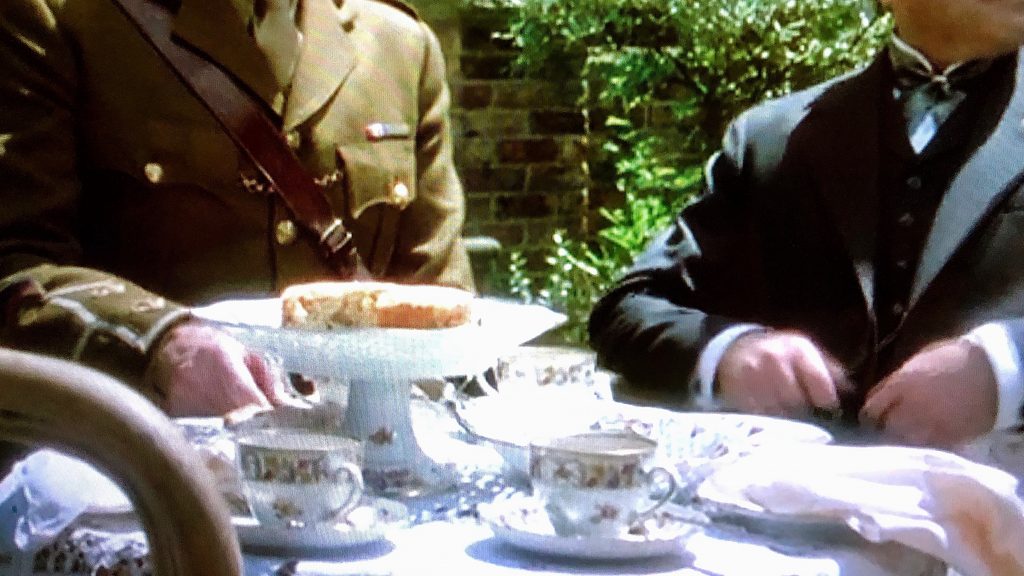


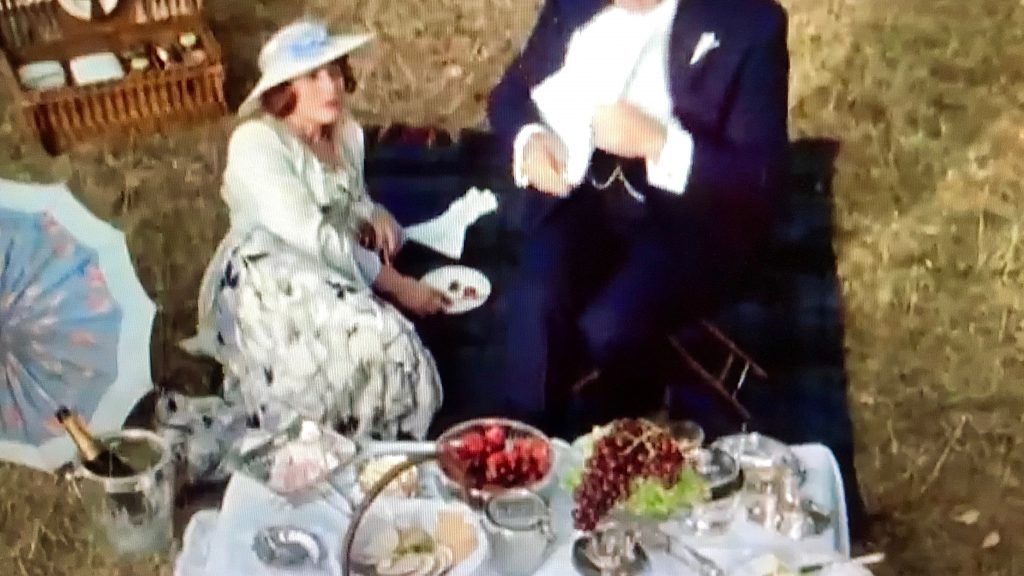
4. Foyle’s War
Set during the second world war, Foyle’s War is a detective drama set in rural England. Michael Kitchen is wonderful as Foyle and the art direction is spot on. Table settings aren’t often seen, but the show ran for so long, there is certainly enough to get a strong idea of the period.
Sometimes, period shows get so caught up in the fine silver and china of the wealthy, the tables of the poor seem to be given no thought at all, as if those without money didn’t care about their surroundings. This is a show that does the high/low aspects of the table really well, with wealthy, middle class and poor tables all being dressed with care.
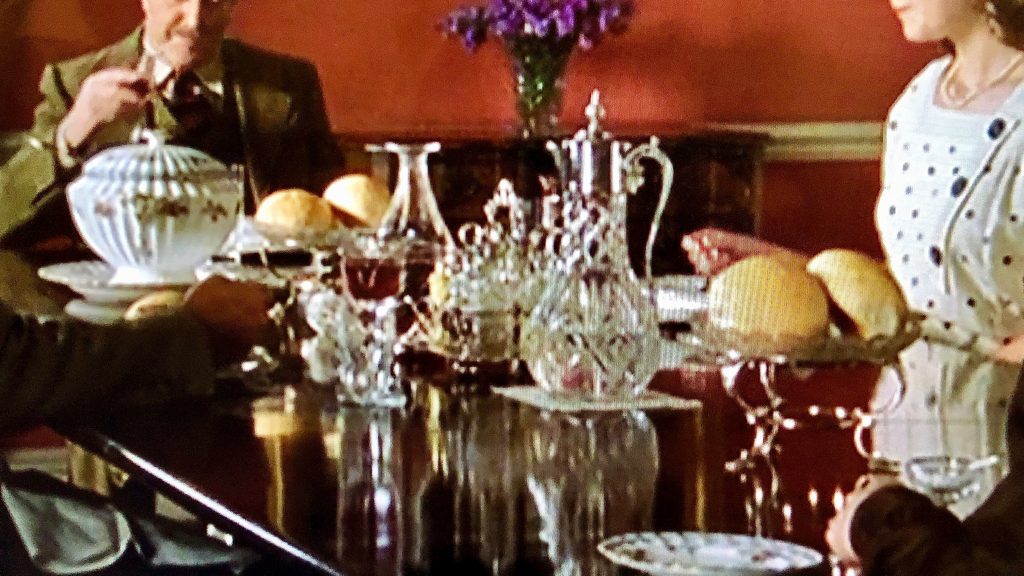
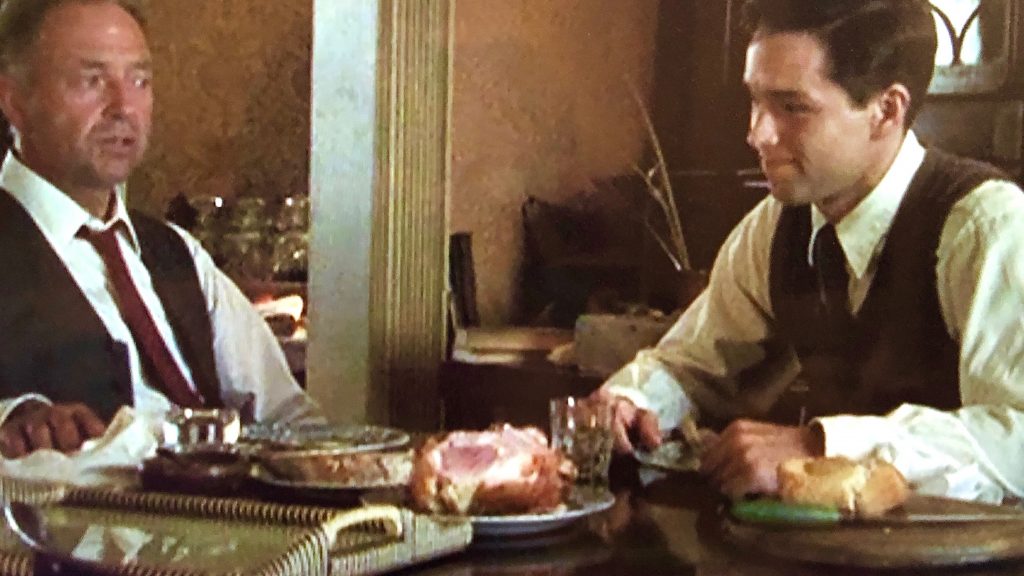
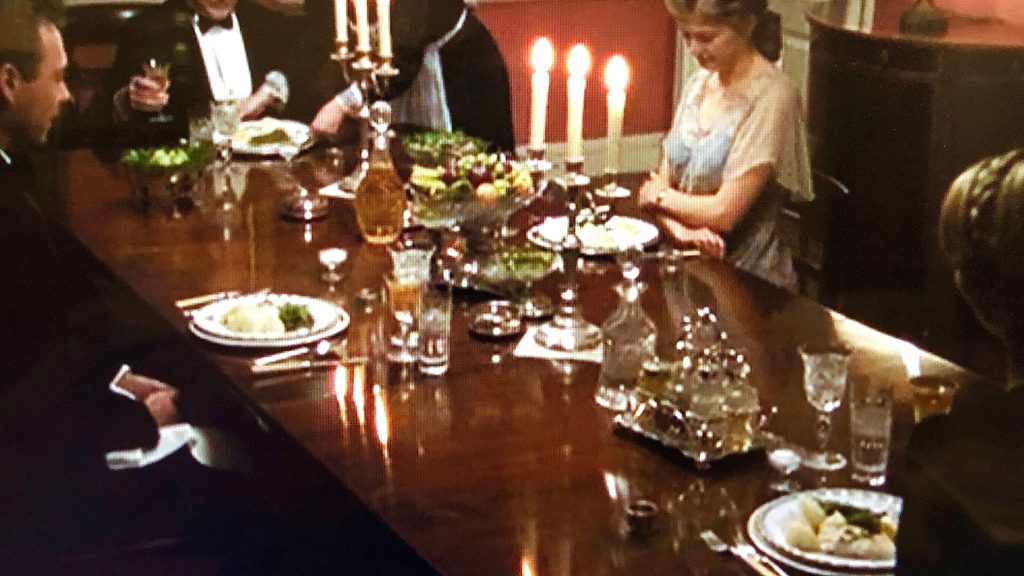
3. Agatha Christie’s Marple (2004)
As you know I made the 1985 series it’s own prologue. The 2004 series comes close when it comes to table setting, just not quite. That aside it’s a well done series. The fun is watching so many actors you know today in guest roles. People have very strong opinions about which Miss Marple is best, but I enjoy watching different actors put their own unique stamp on a role. The writing is solid and the art direction is spectacular. I also do appreciate that having set the series in the post war late 40’s and early 50’s, characters are struggling with ration books and post war politics.
The Body in the Library:


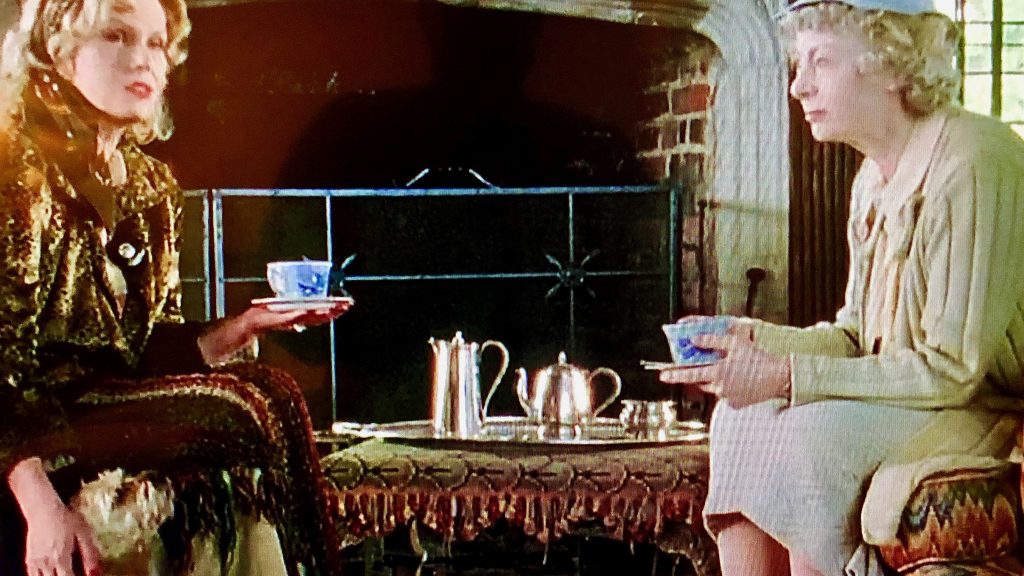
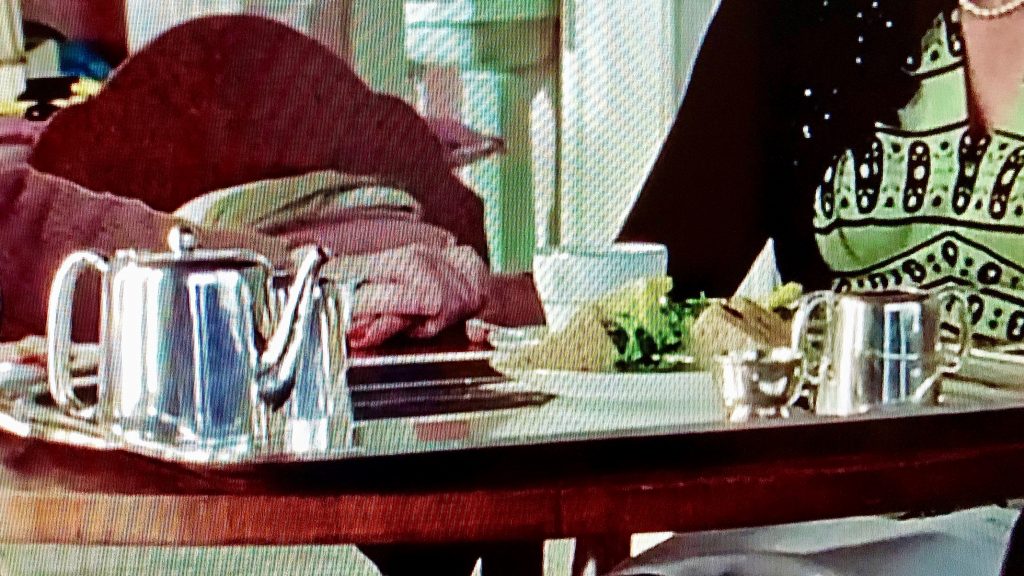
Murder At the Vicarage:
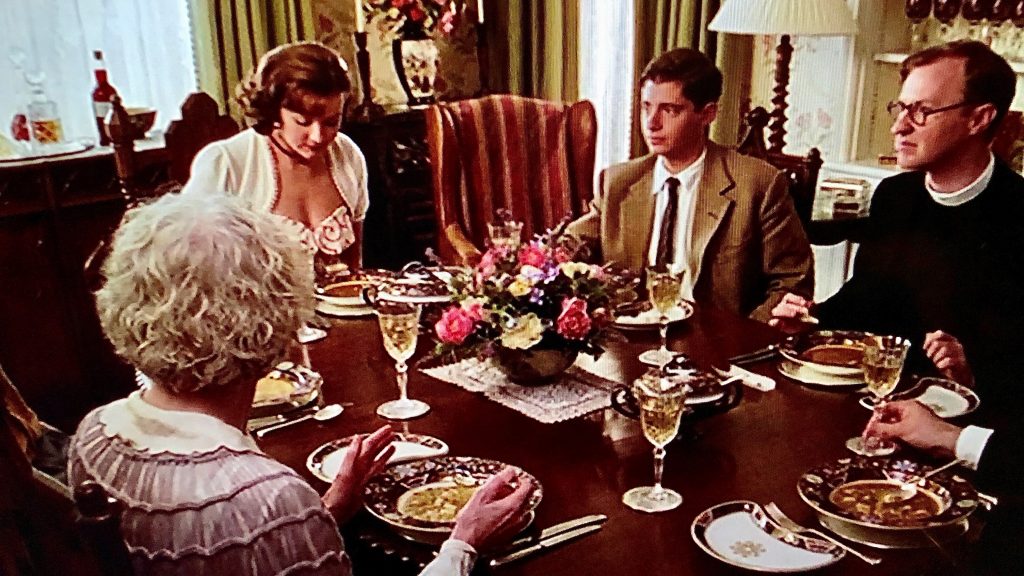

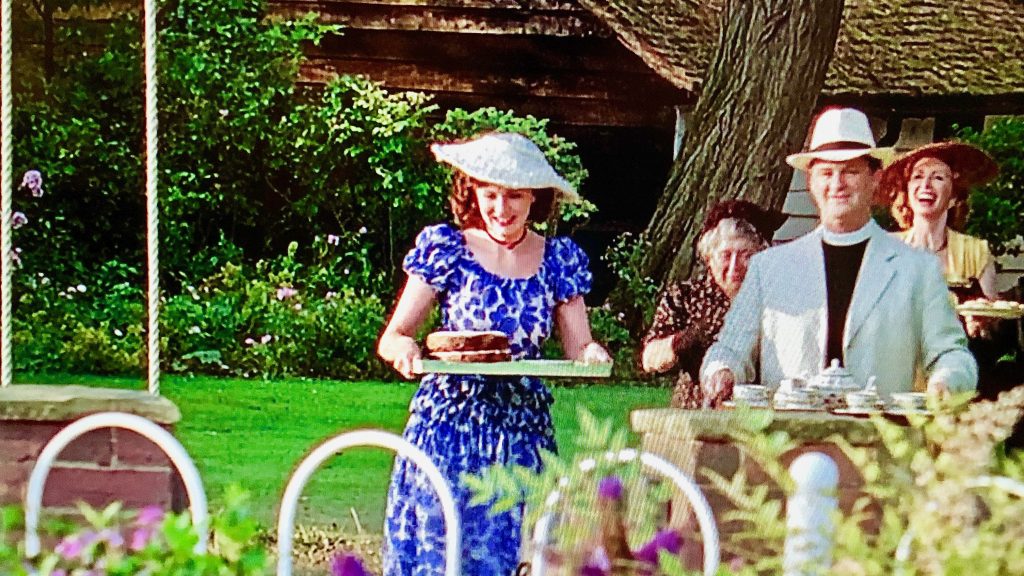
2. Boardwalk empire
The attention to detail in this series is phenomenal. Sometimes I don’t really understand why some details are added in and other’s not, but that’s filmmakers choice, There are many interesting scenes of period meals and like with Poirot, it has a masculine bent I find refreshing in a period piece.
If you read my blog list of the top ten films with Turn of the Century tableware to inspire, you’ll know that Scorsese got high marks for the accurate etiquette, costuming and meal presentation in The Age of Innocence. I think this is something his films do really well in general, even when the subject isn’t period.
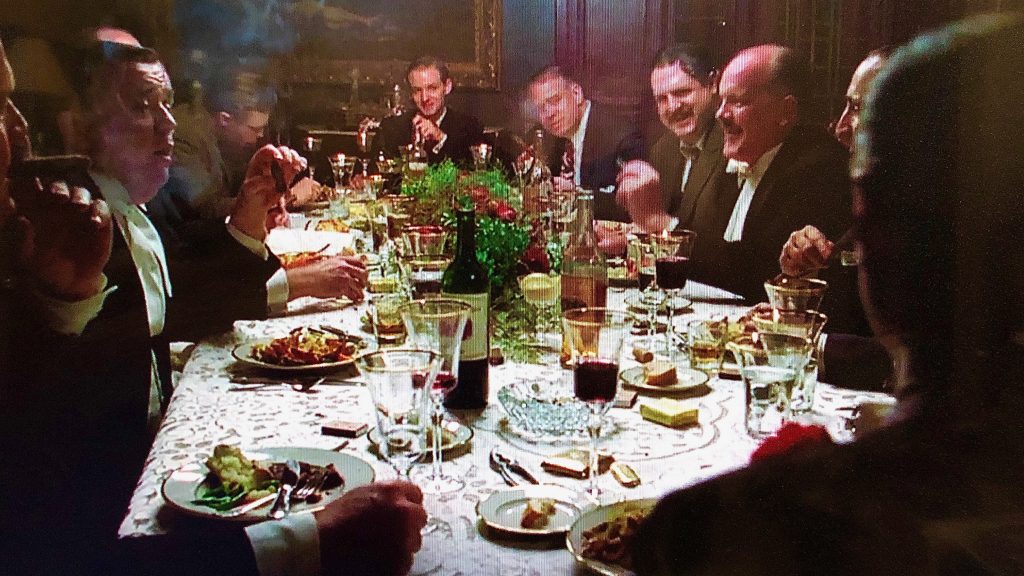


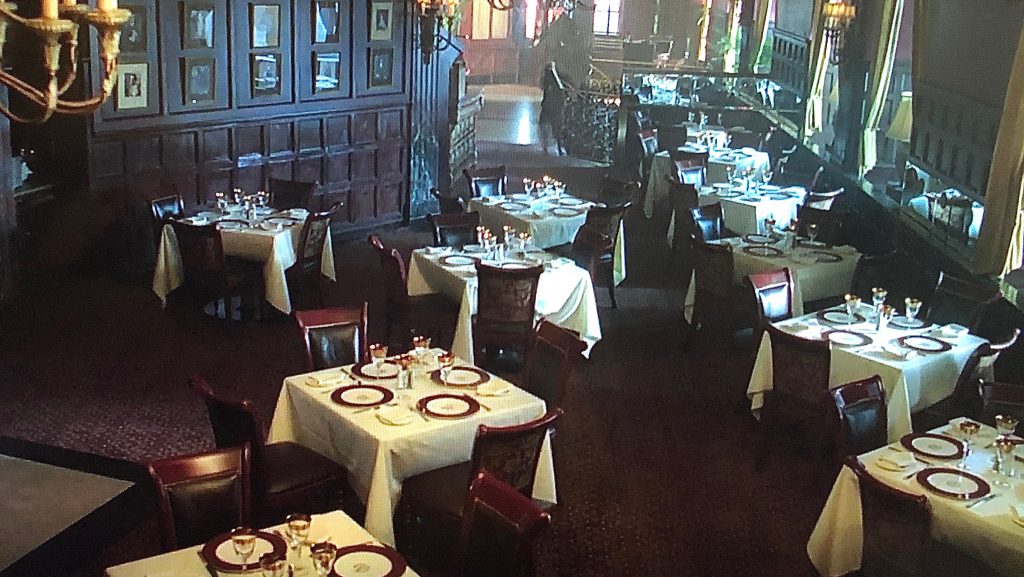
1. The Crown
I hesitated to add The Crown here, despite the fact that it shows a lot of terrific china. Partially because it’s really cooking in the sixties though the show covers the 50’s to 70’s, (over three seasons). Also, because it’s a little too divorced from reality. I’d like to give inspiration for our own tables and I doubt most of us are going to throw a banquet for 400 people any time soon. But the art direction is just so good, so here we are.
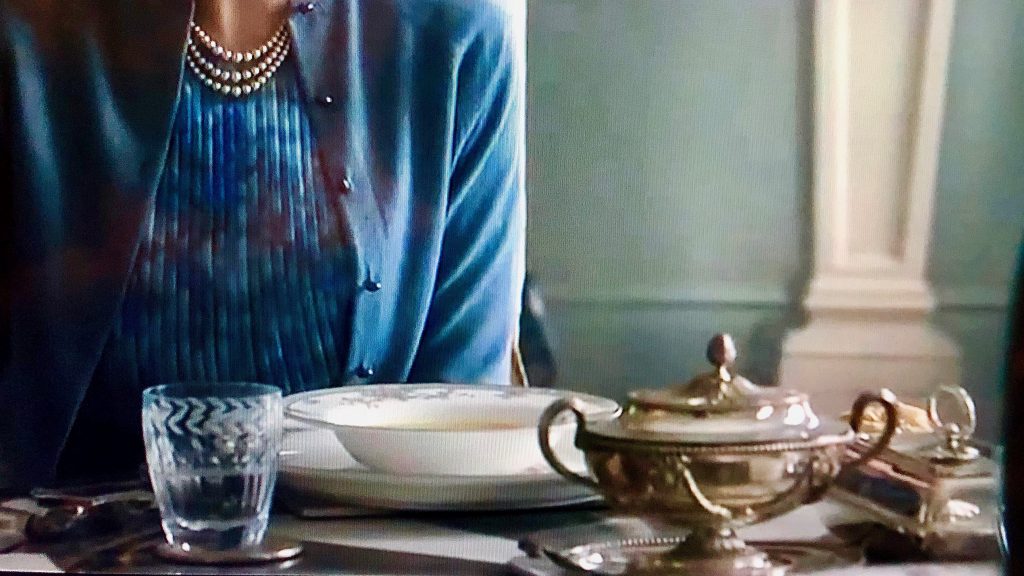
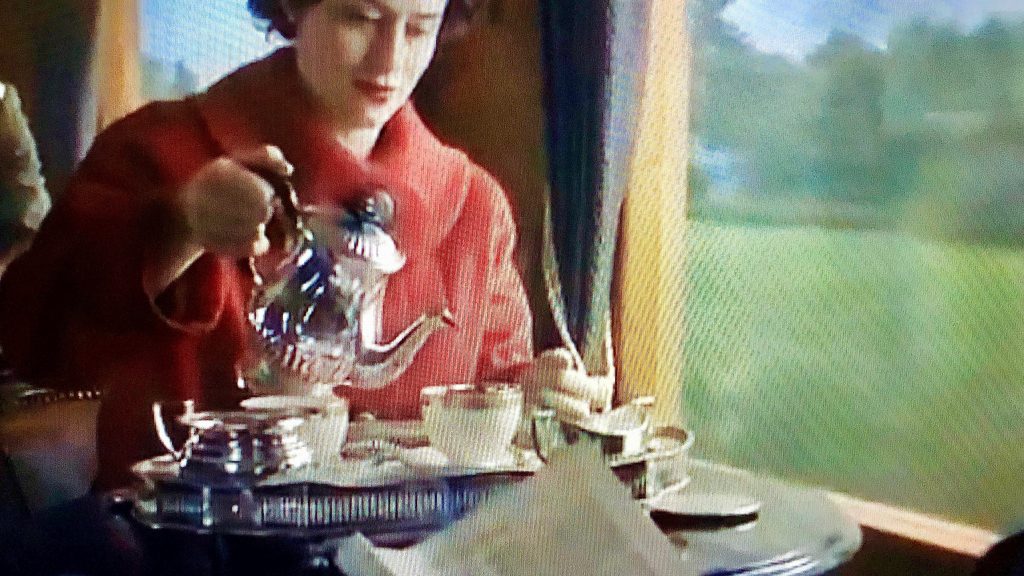
So, do you agree? Is there something I missed? Please let me know! I’m sending you much love and hope you take all this time inside to watch one of these wonderful shows. Much love, Cheri
